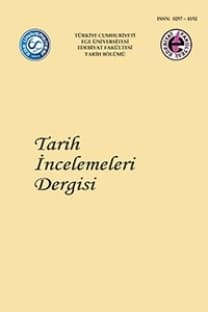III. Gordianus'un Pers (= Sasani) Seferi: Güzergah, Savaşlar ve İmparatorun Ölümü
Severuslar döneminde Parth Krallığı'nın gücü zayıflatıldı. Parth'lara karşı savaşan dönemin ilk imparatoru Septimius Severus, Osrhoene ve Mezopotamya'da yeni eyaletler kurmuştu. Büyük İskender'e öykünen ardılı Caracalla, Parth krallığıyla Roma imparatorluğunu birleştirmek idealinin peşindeydi. Hükümdarlığının son yıllarını (İ.S. 215-216) bu nedenle doğuda harcadı. Hanedanın son iki üyesi, yani Elagabalus (İ.S. 218-219) ve Severus Alexander (İ.S. 231-233) da Partlara karşı savaştılar. Tüm bu savaşlar, Parthların gücünün zayıflamasına ve Sasa'nın oğlu Ardeşir'in Arsaklar sülalesinden son Parth kralı V. Artabanus'a karşı isyanını başarıyla sonuçlandırmasına katkıda bulundu. İ.Ö. 220'li yılların sonlarından itibaren, eski Pers imparatorluğu toprakları içerisinde kurulup genişleyen Part krallığı topraklarında, artık bu tarihten itibaren I. Ardeşir'in mensubu olduğu, adını Ardeşir'in babası Sasa'dan alan Pers kökenli bir hanedan, yani Sasaniler hüküm sürecek ve bu hanedanın ikinci kralı olan I. Sapur, Roma İmparatorlu'nun doğu sınır sistemini çökertecek kadar büyük başarıya imzasını atacaktır. Sasani saldırılarına karşı ilk Roma misillemesi, III. Gordianus'un Doğu'ya, Roma kaynaklarında Persler adıyla da anılan Sasanilere karşı yaptığı seferle gerçekleşti. Ancak bu sefer hakkında bilgi veren Roma kaynaklan az ve yetersizdir. I. Sapur'un üç dilli yazıtı, Roma kaynaklarında yer alan bilgilerin eksik, yetersiz ve güvenilir olmadığı konusunda çarpıcı bir delildir. Bu makalenin amacı, mevcut birinci ve ikinci el kaynaklardan hareketle III. Gordianus'un Anadolu içinden geçerden izlediği güzergah, Sasanilere karşı yaptığı savaşlar ve ölümü konusunu irdelemektir.
Gordian III's Campaign the Parthian: Route, wars and Death of King
In the period of Severian dynasty the strength of Parthian Kingdom was weakened. The first emperor of this period, Septimius Severus, had established new provinces in Mesopotamia and Osrhoene areas. His successor, Caracalla, who was imitating Alexander the Great, has an ideal to unite and to rule Roman and Parthian Empires. This ideal was why he had spent his last years (215-216 AD) in the East. The last two emperors of Severian dynasty, that is Elagabalus (218-219 AD) and Severus Alexander (231-233 AD), also fought against the Parthian. All those wars aided becoming enfeebled Parthian and successful revolt of Sasa's son, Ardashir, againstArtabanus V, the last king of Arsacid dynasty in Parthia. From the end of 220s AD Sassanian dynasty that derived from name of Sasa, father of Ardashir, in origin Persian, will reign in Persia. Further the second ruler of Sassanian dynasty, Saphur I, will successfuly demolish the sistem of the eastern frontier of Roman Empire. The first Roman retaliation against the attacks of Sassanian State was Gordian's Persian campaign. But the Roman sources concerning this campaign is little and insufficient. The inscription of Saphur I which was written in three languages, is clearly evidence on being insufficient, incomplate and untrustworthy of Roman sources. The aim of this paper will be to examine the road crossing Anatolia that was followed by Gordian III, wars and death of emperor.
___
- Bosch l935, C.Bosch, Die Kleinasiatichen Münzen der Römischen kaizerzeit. Stuttgart 1935.
- Chastagnol 1994, A. Chastagnol, Histoire Auguste. Paris 1994.
- Dietz 1980 , K. Dietz, Senatıs contra Principem. Munich 1980.
- Ensslin 1971, W. Ensslin, "The Senate and The Army". Şurada: The Cambridge Ancient History Vol.XII (Cambridge 1971), 57-95.
- Herodianus , Herodian (ed. E. H. Warmington). London 1970.
- Kettenhofen 1983, E.Kettenhofen, "The Persian Campaign of Gordian III and the Inscription of Sahpuhr at the Ka'be-ye Zartost". Şurada: Armies and Frontiers in Roman and Byzantine Anatolia (Ed. S. Mitchell,. Oxford 1983). 151-171.
- Kolb l987 , F.Kolb, Untersuchungen zur Historia Augusta. Bonn 1987.
- Krzyzanowska 1980, A. Krzyzanowska, "Monnaies colonies d'Antioche de Pisidie". Travaux du Centre d'archeologie Mediterrranenne de I'Academie Polonaise des Sciences 7, Varsovie 1970. X.
- Loriot 1975, Loriot, "Les premieres annees de la grand crise du Hie siecle:De l'avenement de Maximin le Thrace (235) a la mort de Gordien III (244), ANRWII2 (1975), 657-787.
- Magie 1950 , D.Magie, Roman Ruler in Asia Minor to the End of Third Century after Christ I-II. Princeton 1950.
- Mitchell 1993, S. Mitchell, Anatolia. Land, Man and Gods in Asia Minor I-II. Oxford 1993.
- Pflaum 1960 , H.G. Pflaum, Les carrieres procuratoriennes equestres sous le Haut-Empire romain. Paris 1960.
- Potter 1990, D.S. Potter, Prophecy and History in Crisis of the Roman Empire. Oxford 1990.
- Sartre 1984, M. Sartre, "Le dies imperii de Gordien III: une inscription inedite de Syrie". Syria 61 (1984), 49-61.
- SHA, Scriptores Historiae Augustae (ed. D. Magie) London 1979.
- ISSN: 0257-4152
- Başlangıç: 1983
- Yayıncı: Prof. Dr. Süleyman Özkan
Sayıdaki Diğer Makaleler
Menteşe Sancağı'nda İzmir'in İşgaline Gösterilen Tepkiler
XII. Yüzyılda Bizans ve Türk Devletleri
Ottoman Bursa in Travel Accounts
Notes on Orthodox Community (Rum) in Ottoman Cyprus
III. Gordianus'un Pers (= Sasani) Seferi: Güzergah, Savaşlar ve İmparatorun Ölümü
Notes on the Orthodox Community (RUM) in Ottoman Cyprus (1580-1640)
Amasya Kaya Kitâbesi (Bâyezid Paşa İm3areti Vakfiyesi)
III. Gordianus’un Pers (=Sasanî) Seferi: Güzergâh
Osmanlı Mahkemelerinde Reform ve Ceride-yi Mahakim'deki Üst Mahkeme Kararları
